The photographer Kim Yeong-jong (김영종) has opened a photography exhibition in Savina Museum on the now disappeared Nan'gok hillside settlement, tells The Hankyoreh. For those residing close enough, the gallery address is Jongno-gu, Anguk-dong 159 (road instructions).
Nan'gok was a hillside settlement or a squatter village in Sillim 7-dong, Gwanak-gu, which was formed after squatters were evicted from downtown Seoul, loaded into trucks and taken to the southern Seoul, and given pieces of land on a hillside area. (As I understand, they were allotted small pieces of land on which to first raise their tents and later build their shacks, but I don't know the administrative processes under which most of the houses in Nan'gok remained formally illegal or without permit [muhôga]). Nan'gok remained a last refuge for those who needed inexpensive housing and those had had to give way to housing development projects but couldn't afford to live in the new houses. Nan'gok was famous for being "the last hillside settlement" (or "moon neighborhood", taltongne for being so high on the hills and close to the moon), and it was a favorite destination of social activists, researchers, journalists, and occasional foreign onlookers... While there certainly were many people who were sincere in willing to help the poor and displaced in Nan'gok, there was also a lot of romanticism and nostalgia for "real human life" and "human odor" (saram naemsae). (I write it "Nan'gok" to separate the syllables nan 蘭 and kok 谷, "Orchid Valley".)
Nan'gok had for a long time been on a housing redevelopment list, but the construction work had been delayed for longer periods for people's unwillingness to move and for the bankruptcy of the construction company, if I remember correctly. In 2000 people had begun moving away, in 2001 the place was already very quiet, and in summer 2002 less than 100 families remained of what had once been a home for thousands of people.
Now that the photographer mentioned above has opened a photography exhibition, I'll also have mine. I never visited Nan'gok during my longer periods of stay in Korea, but went later to take a look at the place on three occasions, in 2000, 2001 and 2002. It was never anything else than sightseeing, "tourism of poverty", for Nan'gok was indeed a very impressive, photogenic sight of a mat of small grey houses spread over a hillside. In my last visit I ended up talking and sympathizing with people who were member of the renters' association. Those were people last to remain, for as renters they got a much smaller compensation for removal than houseowners, who by that had already left the place. They tried to resist the clearing down of the last houses and demand compensation that would have allowed them to find decent housing elsewhere, but at the end their efforts must have been in vain. I have no idea what has become of them.
Before my own pics, a few examples of what has been behind the development of neighborhoods such as Nan'gok.

Do-dong, Seoul, in 1957.
The Do-dong of that time is close to Seoul railway station, and is called something else nowadays. When settlements of rural migrants like this in downtown Seoul were cleared away, places in outskirts of town like in the picture below sprang up. Nan'gok has looked something like in these pictures before more proper houses were built.
Click here to see the picture in full.
Picture linked from the Visual Anthropology Archive.
 Gwangju-gun, Gyeonggi-do in 1971. People evicted from downtown have been taken to a field outside Seoul. From this kind of tents, people begun to build houses from whatever they could get their hands on. In some places, the housing remained in the substandard level of Nan'gok, in others either the increase of the wealth of the residents or development projects by the authorities transformed the areas to small housing neighborhoods (chut'aekka) or to apartment blocks (that we all love so). Picture linked from Chosun Ilbo photography database. Gwangju-gun, Gyeonggi-do in 1971. People evicted from downtown have been taken to a field outside Seoul. From this kind of tents, people begun to build houses from whatever they could get their hands on. In some places, the housing remained in the substandard level of Nan'gok, in others either the increase of the wealth of the residents or development projects by the authorities transformed the areas to small housing neighborhoods (chut'aekka) or to apartment blocks (that we all love so). Picture linked from Chosun Ilbo photography database.
Now to Nan'gok in 2000-2002.
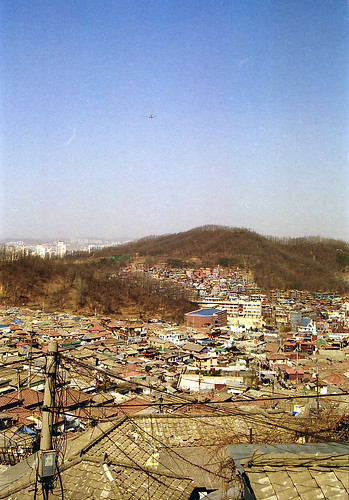
Nan'gok seen from the road above.

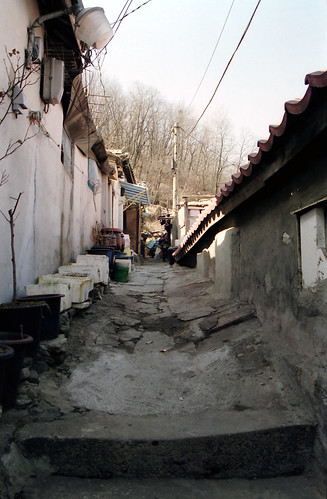
An alley close to the top of the hill.
(c) AL 2000
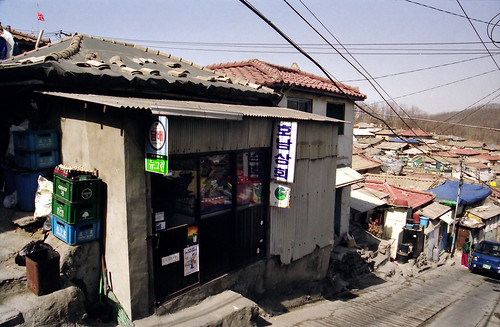
Honam Sanghoe; there were a lot of people from the Chôlla (Jeolla) province (Honam) living in Sillim-dong.
(c) AL 2000
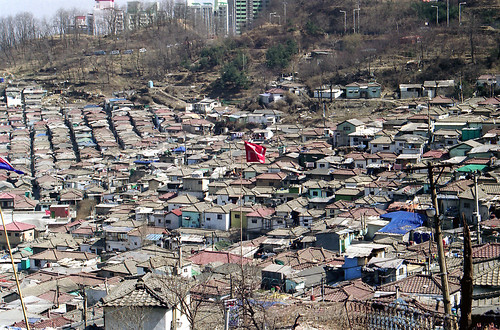
Fortune teller's (or shaman's) swastika flag.
All the religious denominations and forms of folk religion were well represented in Nan'gok, small Buddhist temples (am) and Protestant prayer houses (kidowôn) existing side by side (I think there might have been a Catholic one, too). (c) AL 2000

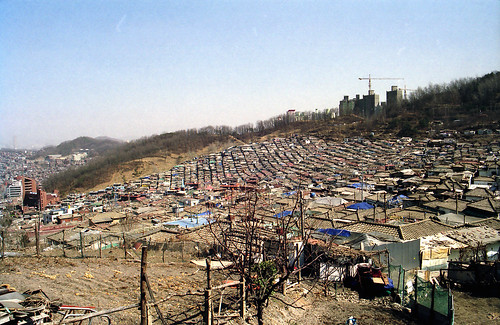
(c) AL 2000
The beauty of poverty; Nan'gok made an impressive sight, with the neighborhood spreading on the hillside, and the rest of Seoul visible far to the north of the river. An apartment block was under construction at that on the top of the hill in Sillim 10-dong; Nan'gok is going to look the same. During the big rains and floods in 2001, it was said that one reason why so many people were killed in the low-housing neighborhood on the other side of the hill was that the hillsides covered with concrete and asphalt couldn't absorb the rain as before.

A public toilet. (c) AL 2000
target=_blank
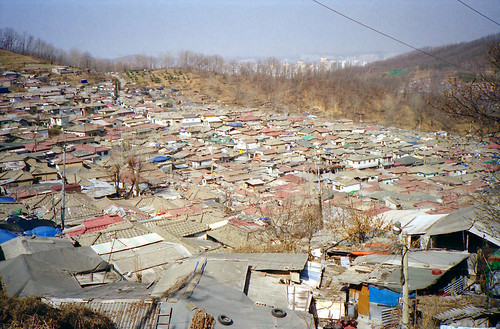
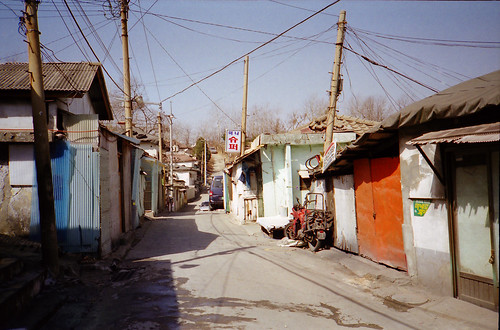
미니 슈퍼. 2000년3월24일. Mini Store. March 24, 2000.
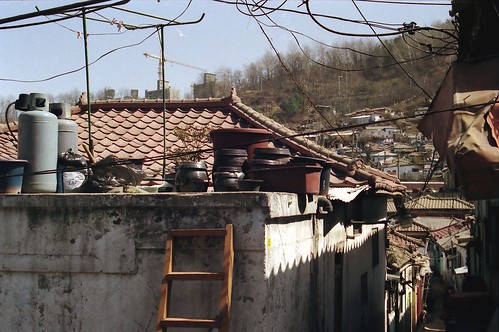
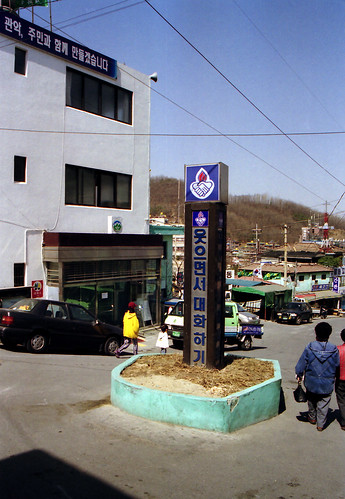
경찰서 앞에 세워진 선전탑. 2000년3월24일. "Smiling and conversation." March 24, 2000.
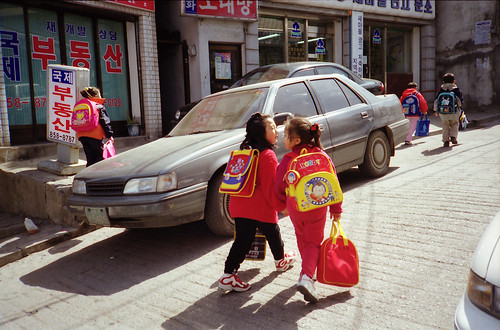
학교에서 집으로 돌아오는 아이들. 2000년3월24일. Children returning from school March 24, 2000.
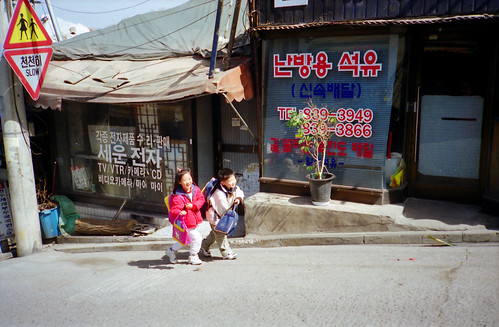
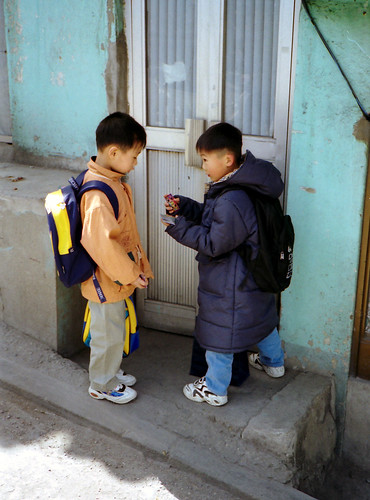
Nan'gok in September 2001.
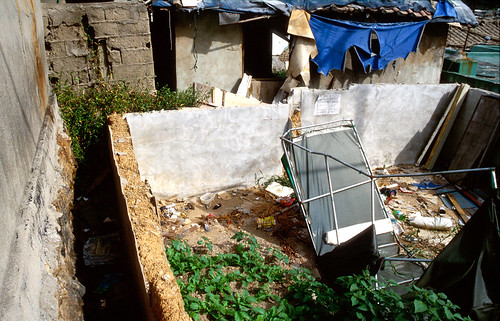
A house which has been cleared away: clay walls with a thin concrete covering.
(c) AL 2001

I think it's the green dome of the parliamentary building in Youido that's visible in the upper middle of the picture. (Click here for a large 2304x1503 picture to open in a new window)
(c) AL 2001
 | Honam Sanghoe in 2002.
Most of the surrounding houses had been torn down.
(c) AL 2002 |  | Kwanak sanghoe; sanghoe(商會) is an old-fashioned term, which has mostly given way for super or mart.
(c) AL 2002 |  | The head of the renters' association (난곡세입자다모임), who asked to be photographed. |  | A kamjat'ang meal in the association's office, which had originally been a laundry. (c) AL 2002 |
 "> ">
"Against tearing down the empty houses" in the banner.
These people did not insist living in these substandard houses with all the social stigma it brought to them and their children; it was more a question of affordable housing, the reason these people were remaining here in the first place.
(c) AL 2002

Picture from Chosun Ilbo April 30, 2003.
Update: I'm not sure if this is relevant for South Korea, where the major part of slums (actually a word one never hears used of Korean neighborhoods) or poor neighborhoods have been quite succesfully transformed into better housing, with all the social cost involved, but there's an article "Planet of Slums" in New Left Review by Mike Davis (via Keywords).
Categories at del.icio.us/hunjang: housing ∙ neighborhood ∙ stratification ∙ contemp.history ∙ Sillim/Gwanak ∙ cities |
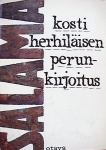

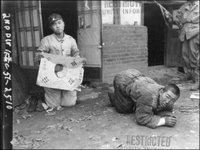
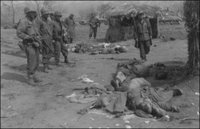



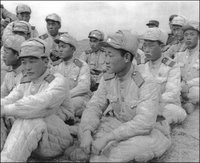


 Some 700-800 years ago, the powerful families in Tuscany built higher and higher towers to compete in prestige. Especially the towers still left in San Gimignano are famous.
Some 700-800 years ago, the powerful families in Tuscany built higher and higher towers to compete in prestige. Especially the towers still left in San Gimignano are famous.

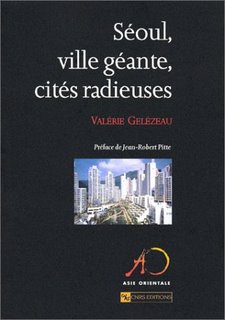










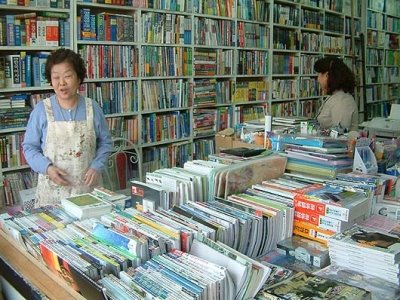






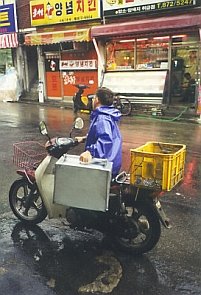
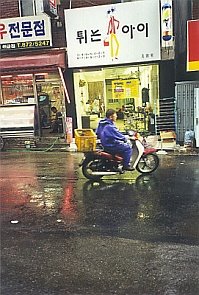

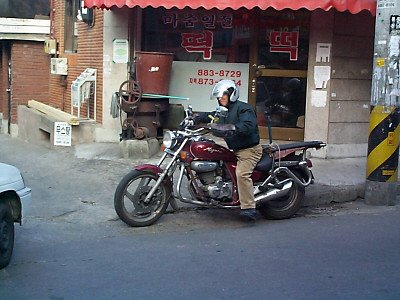



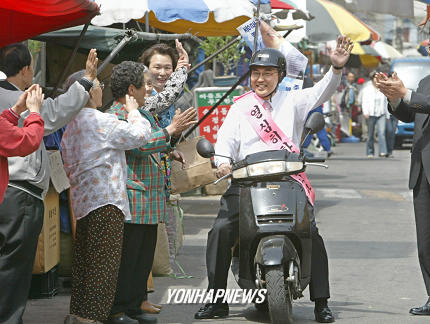
 Kang Ki-gap of DLP was elected as a proportional representative to the national assembly. The following quote is
Kang Ki-gap of DLP was elected as a proportional representative to the national assembly. The following quote is  The final election results in a table linked from Hankyoreh.
The final election results in a table linked from Hankyoreh. Lee Hae-chan
Lee Hae-chan  Kim Chul-soo
Kim Chul-soo

 Gwangju-gun, Gyeonggi-do in 1971. People evicted from downtown have been taken to a field outside Seoul. From this kind of tents, people begun to build houses from whatever they could get their hands on. In some places, the housing remained in the substandard level of Nan'gok, in others either the increase of the wealth of the residents or development projects by the authorities transformed the areas to small housing neighborhoods (chut'aekka) or to apartment blocks (that we all love so). Picture
Gwangju-gun, Gyeonggi-do in 1971. People evicted from downtown have been taken to a field outside Seoul. From this kind of tents, people begun to build houses from whatever they could get their hands on. In some places, the housing remained in the substandard level of Nan'gok, in others either the increase of the wealth of the residents or development projects by the authorities transformed the areas to small housing neighborhoods (chut'aekka) or to apartment blocks (that we all love so). Picture 




















